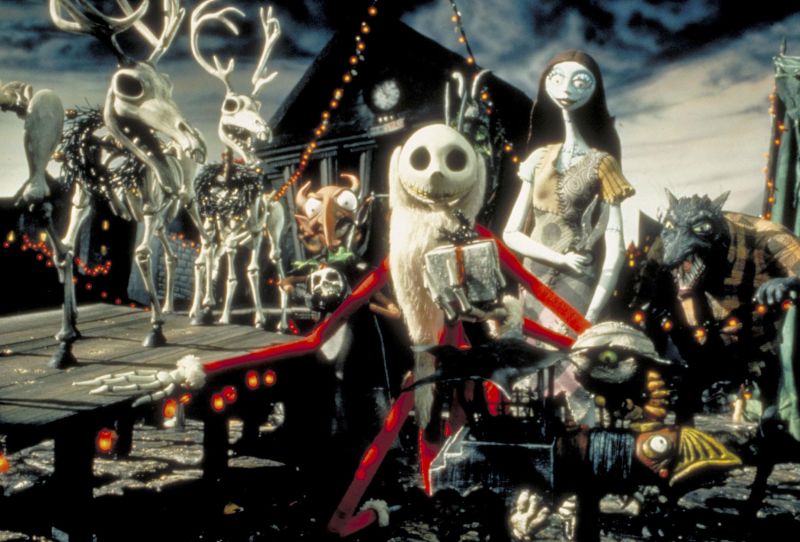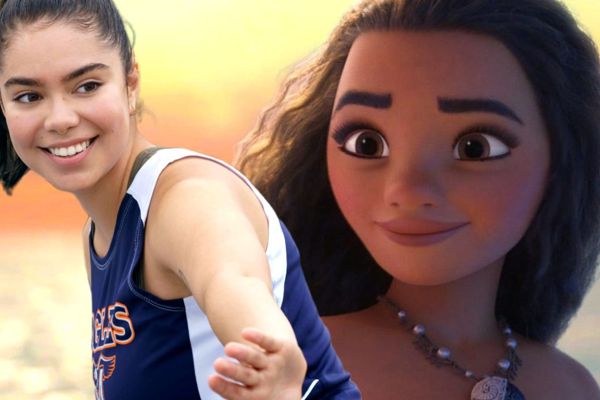
The Evolution of Nightmare Before Christmas: From Cult Favorite to Disney's Beloved Gem

The Nightmare Before Christmas went from overlooked gem to cherished Disney classic Discover how this animated film evolved from a cult favorite to a beloved holiday tradition in theaters, captivating viewers both young and old
"The Nightmare Before Christmas," now a prominent Disney property, showcases its iconic character Jack Skellington throughout Disneyland during Halloween and Christmastime. Jack's skeletal smile can be found on various merchandise items, such as pillowcases, backpacks, and Build-a-Bear stuffed animals. This film stands as one of Disney's most exceptional artistic accomplishments and continues to be a profitable venture even after three decades.
However, in 1993, marketing a Halloween-Christmas film hybrid that featured a slightly eccentric but well-intentioned skeleton wearing a bat bowtie and nearly causing Santa's demise presented a challenge. Fearing that the movie might frighten young audiences accustomed to "The Little Mermaid" and "Aladdin," Disney decided to release it under the Touchstone Pictures banner. This label was typically used for films with more mature themes compared to the standard Disney fare. (A similar approach was taken with "Who Framed Roger Rabbit" a few years prior.)
Upon its release, the film made a modest impact on the box office. However, over the years, many viewers stumbled upon the film, often through home video, and admired its remarkable puppets, unique rhythm, and catchy holiday tunes. The film garnered such strong audience support that it was rereleased multiple times, transforming it from a cult classic into a must-watch during both Halloween and Christmas.
Fast forward thirty years, and Disney has fully embraced "The Nightmare Before Christmas." The company has integrated the film's characters into its Haunted Mansion attraction at Disneyland in California. They have also re-released the film on several occasions. Gone are the days when Jack Skellington and his eclectic gang of undead dreamers were limited to being sold in Hot Topics and novelty shops—now, "Nightmare" characters can be found alongside Ariel and Mickey Mouse as plush toys and figurines.
Nightmare wasnt an immediate hit
Disney is celebrating the 30th anniversary of its wonderfully unconventional films by bringing them back to theaters. Discover how this charming movie, featuring a group of undead dreamers, captivated audiences and solidified its place as a must-see during Disney's holiday entertainment lineup.
Disney executives were concerned about the chilling crew of undead characters that surrounded Jack Skellington and the compassionate Sally in "The Nightmare Before Christmas." Their fear was that the film would frighten young children.
"Nightmare" was created by Henry Selick and Tim Burton, who began their careers as animators at Disney in the 1980s. Focusing on unconventional characters, they struggled to capture the essence of Mickey and other iconic Disney figures. "We didn't fit the mold of typical Disney artists," Selick explained to A.frame, the digital magazine of the Academy of Motion Picture Arts and Sciences, in a recent interview.
Burton initially created a poem titled "Nightmare" featuring eerie characters experimenting with Christmas. Disney initially showed no interest in the project. However, when Burton left the studio and achieved success with his first "Batman" film, Disney reconsidered. Given Burton's involvement in a "Batman" sequel, Selick was brought in to direct the meticulous stop-motion film. The production of the film lasted for over three years.
The revised storyline focused on Jack Skellington, the Pumpkin King who resided in Halloween Town. He longed for something different from scaring trick-or-treaters, which he found when he stumbled upon the cheerful Christmas Town run by Santa. Jack decided to give Santa a break, leading to disastrous consequences as the villainous Oogie Boogie took control of "Sandy Claws" and endangered Christmas. Meanwhile, Sally, a living rag-doll who secretly admired Jack, played a vital role in saving both Christmas and Jack's afterlife.
Disney executives initially chose Selick to bring Burton's dark but heartfelt vision to life. However, when the film was released, they were not expecting it to become a massive hit. In a 2006 interview with IGN, Selick revealed that they had concerns over the film's intimidating characters, including murderous child sidekicks, warty witches, and a "clown with a tearaway face," fearing that these elements might be too frightening for young audiences.
In "The Nightmare Before Christmas," the conniving sidekicks Lock, Shock, and Barrel, filled with devilish glee, deceitfully seize "Mr. Sandy Claws" while pretending to be deranged trick-or-treaters.
According to Selick, the creators of "Nightmare" were concerned that it wouldn't be recognized as a Disney film and that their target audience would dislike it and not support it. Despite not having the Disney branding, the film had a wide release on October 29, 1993. It earned $50 million at the US box office that year, which can be considered a modest success. In comparison, "Jurassic Park," another dark and crowd-pleasing film, became the highest-grossing film of the year, making over $357 million domestically. Additionally, "Nightmare" received an Oscar nomination for its impressive visual effects, although it ultimately lost to "Jurassic Park."
"ââ(The initial) small success," Selick explained to The Hollywood Reporter in 2018 on the occasion of the film's 25th anniversary. "It managed to achieve double its financial investment, resulting in the creation of a few accompanying toys before fading away. However, over time, it transformed into something entirely different."
Nightmares popularity grew with at-home viewers
"Nightmare" had a significant impact on home viewers after its release, as it was discovered on VHS and later on DVD. The film deeply resonated with individuals, particularly younger audiences, who related to Jack's sense of being misunderstood and yearning for a greater destiny beyond their circumstances. This sentiment was clearly expressed by renowned critic Roger Ebert, who awarded the film a glowing three-and-a-half-star review in 1993. Ebert acknowledged that "Nightmare" possessed a unique and eccentric charm that would captivate older children, providing them with a sense of anticipation for the extraordinary possibilities that life holds.
Disney's reception of the film improved over the years. In October 2001, Disneyland introduced Haunted Mansion Holiday, an overlay of the original Haunted Mansion attraction with a "Nightmare" theme. This enchanting transformation showcased Jack and his friends redecorating the eerie residence to celebrate Christmas.
Disneyland's Haunted Mansion attraction is dressed up from Halloween to Christmas with characters from "The Nightmare Before Christmas."
Patrick Fallon/Bloomberg/Getty Images
Jack and the residents of Halloween Town were popular figures at alternative stores like Hot Topic, where "Nightmare" merchandise was available for purchase throughout the year. In 2006, Disney finally distributed the film under the Walt Disney Pictures brand, this time in 3D, and it generated over $8.7 million in revenue in the United States. According to Selick, the director, it took Disney some time to realize the potential of the film.
"Nightmare" characters now regularly appear at Disney parks during Halloween and Christmas, where they greet young visitors and can be found on seasonal merchandise. Disney films have become even more explicit in their exploration of death, such as the popular Pixar film "Coco," which features several animated skeletons. Additionally, Disney released a fully animated version of Burton's short film "Frankenweenie." Burton has continued to direct children's films for Disney, including "Alice in Wonderland" and "Dumbo," showcasing his signature dark style, albeit somewhat toned down.
The cult success of "Nightmare" also paved the way for other macabre animated children's films, like Burton's "Corpse Bride," as well as "Paranorman" and "Coraline," directed by Henry Selick. Selick believes these films demonstrate that children's entertainment can embrace darkness while still being suitable for their age.
Selick told IGN that it wasn't too dark or scary. He mentioned that even very young kids, as young as three, enjoy and respond well to "Nightmare" because they love being scared. The recent rerelease of the film has earned over $7 million, and it continues to be a prominent title on Disney+, highlighted among other family-friendly scares and Christmas classics. For years, Selick and Burton have dismissed rumors of a sequel. While Selick has shown some openness to the idea, he is content with the impact of the film and the comfort it brings to those who proudly embrace their uniqueness worldwide.
















